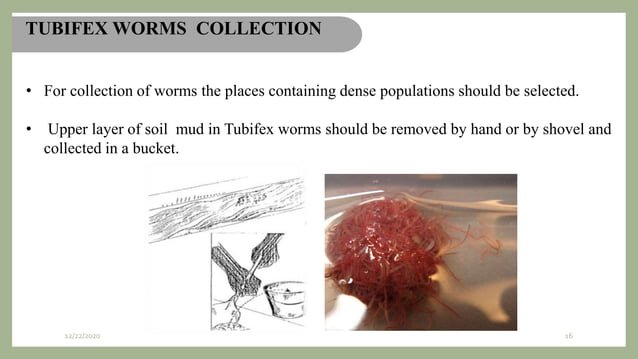
You might be wondering why tubifex worms are so important. Well, they not only contribute to the ecosystem but also serve as a food source for various animals, including fish and birds. Their health reflects the overall state of aquatic ecosystems, making it crucial to understand the factors that can harm their populations. In this article, we’ll explore the predators that hunt tubifex worms and the environmental challenges they face.
Understanding Tubifex Worms
Before we dig into the threats, let’s take a closer look at tubifex worms themselves. These worms belong to the genus *Tubifex* and are often seen wriggling in muddy substrates. They prefer habitats rich in organic matter, which provides them with food. With their red or pink coloration, they often blend into the sediment, making them less visible to predators.
One remarkable aspect of tubifex worms is their ability to tolerate low-oxygen environments. This adaptability allows them to thrive where other organisms might struggle. They are often seen as indicators of water quality; a healthy population suggests a balanced ecosystem. But, as we’ll see, this balance is easily upset.
The Predators of Tubifex Worms
Tubifex worms aren’t top of the food chain by any means; they have their share of hungry predators. These predators vary based on the ecosystem, but several are particularly common. Here are a few notable ones:
- Fish: Various fish species, especially those that forage at the bottom, are known to eat tubifex worms. Think of them as the “big kids” at the playground, looking to grab an easy snack.
- Birds: Certain birds, such as ducks and herons, often probe the sediment in search of worms, including tubifex. They swoop in, snatching these worms out of their muddy homes.
- Invertebrates: Many invertebrates, like certain types of crabs and predatory insects, also prey on tubifex worms. They use their sharp appendages to extract these worms from the substrate, making survival a challenge.
These predators play a natural role in regulating tubifex populations, but when predator numbers increase or environmental conditions change, it can lead to drastic declines in worm numbers.
Environmental Threats to Tubifex Worms
While predators pose a significant risk, environmental threats can be even more damaging to tubifex worm populations. Several factors can impact their habitat and survival rates:
- Pollution: Chemicals and waste entering water bodies can severely affect tubifex worms. Heavy metals, pesticides, and other pollutants can make their environment toxic. Imagine trying to survive in a place filled with harmful substances; that’s what they face.
- Temperature Changes: Tubifex worms prefer stable temperatures. Sudden changes, like warm water from industrial discharges, can lead to stress or even death in worm populations. They’re like us on a hot summer day; extreme heat can get uncomfortable very quickly.
- Oxygen Levels: As mentioned before, tubifex worms can tolerate low-oxygen environments, but extreme dips can still be fatal. Events like algal blooms reduce oxygen in the water, leading to what scientists call “hypoxic” conditions.
These environmental challenges can lead to drastic declines in tubifex worm populations, causing ripple effects throughout the ecosystem.
Impact of Climate Change
Climate change poses yet another layer of threat to tubifex worms. As global temperatures rise, we’re seeing shifts in weather patterns, which can lead to:
- Increased Flooding: Heavy rains can wash pollutants into waterways, further harming tubifex worms. Think of a flooded playground, where all the toys are swept away!
- Temperature Fluctuations: Warmer winters and hotter summers directly affect the life cycles of these worms. If the temperature swings too far, it can disrupt their breeding and feeding patterns.
- Habitat Loss: Changes in land use due to climate changes can lead to habitat destruction, shrinking the areas where tubifex worms can thrive.
The combination of climate change and existing environmental threats creates a challenging scenario for tubifex worms.
Conservation Efforts and Solutions
With all these threats to tubifex worm populations, you might be curious about what can be done. Fortunately, there are efforts aimed at protecting these worms and their habitats. Here are some strategies that can help:
- Water Quality Monitoring: Keeping track of pollution levels helps ensure that tubifex worms have a healthy environment. Regular monitoring can identify problems before they escalate.
- Habitat Restoration: Restoring natural habitats, such as wetlands, can provide safe spaces for tubifex worms to thrive. Imagine rebuilding a playground where kids can safely play again!
- Public Awareness: Educating the community about the importance of tubifex worms and the threats they face can lead to more responsible behavior and environmental stewardship.
By supporting these efforts, we can help protect tubifex worms and the ecological roles they play.
So, why should we care about tubifex worms? They may seem small and insignificant, but their presence is vital for a healthy aquatic ecosystem. They break down organic material, improve water clarity, and serve as food for many animals. Protecting them means protecting the entire ecosystem they inhabit.
Moving forward, understanding the threats they face—like predators and environmental factors—is crucial. By fostering a healthy environment, we can help ensure that tubifex worms continue to thrive, keeping our ecosystems balanced and flourishing. After all, every creature, big or small, plays a role in the grand tapestry of life. Let’s do our part to keep that tapestry intact.
